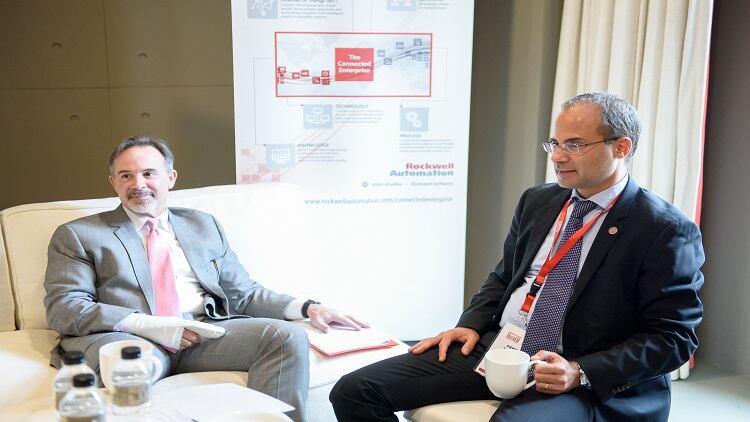FoodNavigator-Asia spoke to Joe Bartolomeo, regional vice-president of Rockwell Automation Asia Pacific and Pierre Teszner, regional director of South East Asia (SEA), to find out more about emerging production trends in SEA’s food and beverage industry.
The convergence between robotics and automation has become a “major trend” in today’s food and beverage industry, Teszner observed.
Put in simpler terms, more manufacturers are demanding for production robots to synchronise with the production processes.
“You need to make sure that the robots are synchronised with the processes, otherwise the robots are not picking the right boxes, do the right packaging, operations at the right pace,” he explained.
“This trend is not only happening in Singapore, but also in Thailand with their Thailand 4.0 initiative,” he added.
At present, production robots do not necessarily synchronise completely, due to a technological gap, or because production is done manually.
Building on this point, Bartolomeo explained, ultimately, the need to optimise production comes from the consumers.
“Consumers are driving production trends more than anything else…With the middle class growing, it is putting a lot more pressure on product quality, quantity and packaging. Our task at Rockwell is to help manufacturers get their products out soon,” he said.
“The opportunity for manufacturers to grow lies on how they synchronise the end-to-end supply chain… From raw materials, to production, to assembly, to packaging, and to shipping it out, we are trying to track and optimise that whole process for manufacturers,” he added.
Cutting downtime
Besides synchronising different production systems, Bartolomeo added that the collection of data to make improved decisions was another key factor to optimise production.
For instance, with the real time collection of data, manufacturers can perform preventive diagnostics and cut down the amount of downtime.
“Let’s say that you are a beverage maker and you have a packaging equipment that is about to go down. Yesterday, it would have gone now and caused downtime. Today (with synchronised systems), customers can know that in about an hour, their machine is about to breakdown, so they can appoint somebody to take a look and fix it before it goes down,” he elaborated.
Teszner added that real time collection of data was more time-efficient as compared to manual collection and analysing of data.
“If there is no digitisation, all reporting is done manually, the operator will need to go up and down the production line to record information. Time is needed to understand the report. With digitisation, we can have real time information, know the root cause, have self-diagnostic solutions and suffer lesser downtime.”
The human factor
Optimising end-to-end production does not only depend on the availability of technology; the willingness to adopt the technology is a more important factor, Teszner highlighted.
A young working population with a good level of technical education and no fear of upgrading of skills is more likely to adopt newer, advanced technologies.
This is because the typical resistance to technological change usually are the mid-level operators, due to the fear of upskilling or losing their jobs.
“When the working population is young, has a good level of tech education, no fear of upskilling, and government support, we find that these are great conditions for adoption of digitalisation. This is what we see in Vietnam, Thailand and Malaysia,” he said.
“When you compare them to Europe or US, these countries are moving from the 20th century of using automation to the latest greatest. They do two or three steps in one step,” Teszner said.

